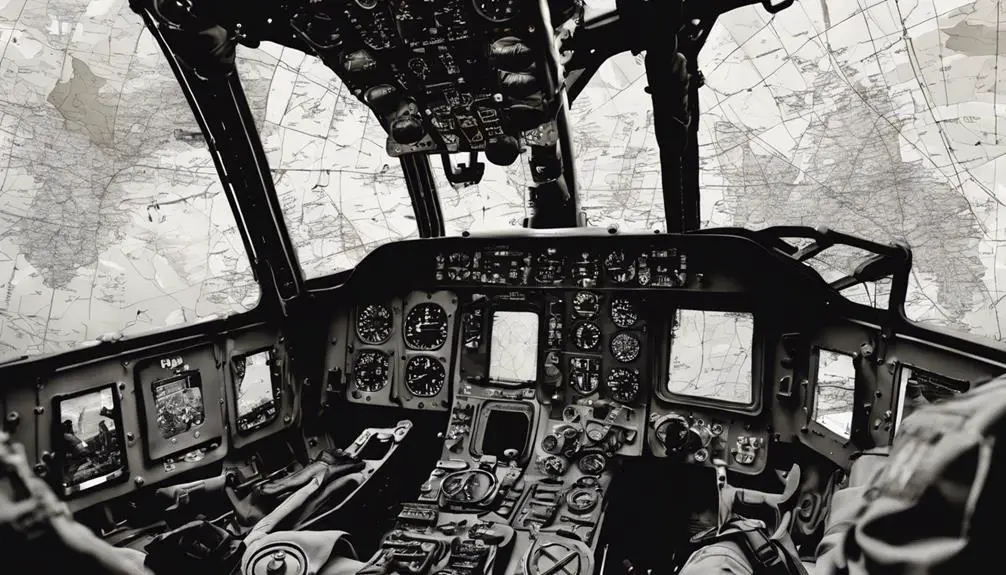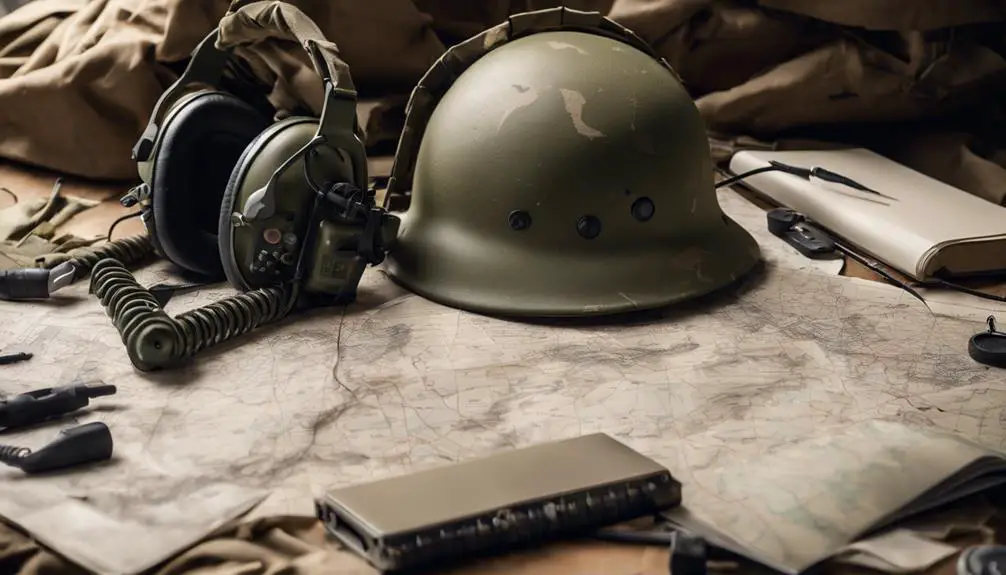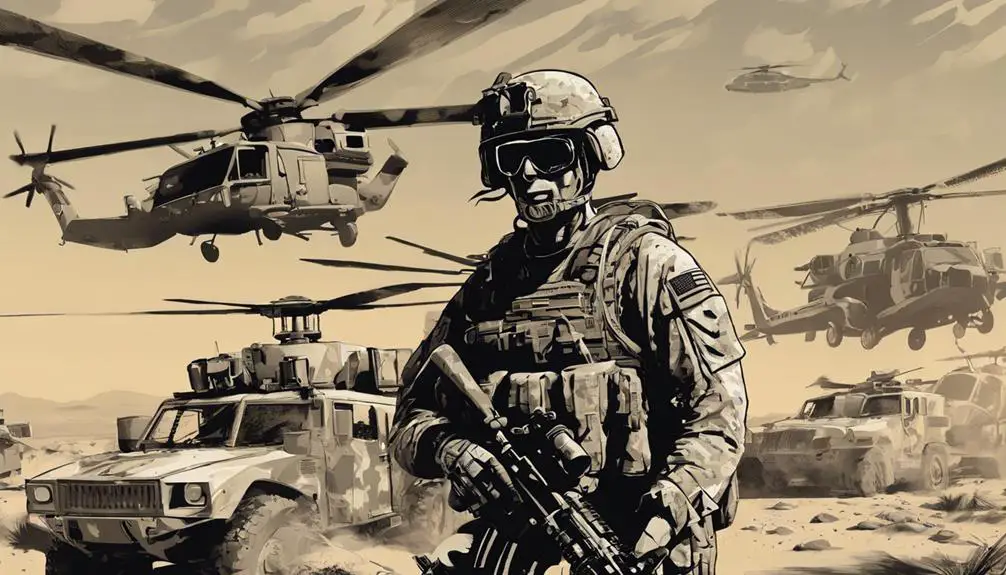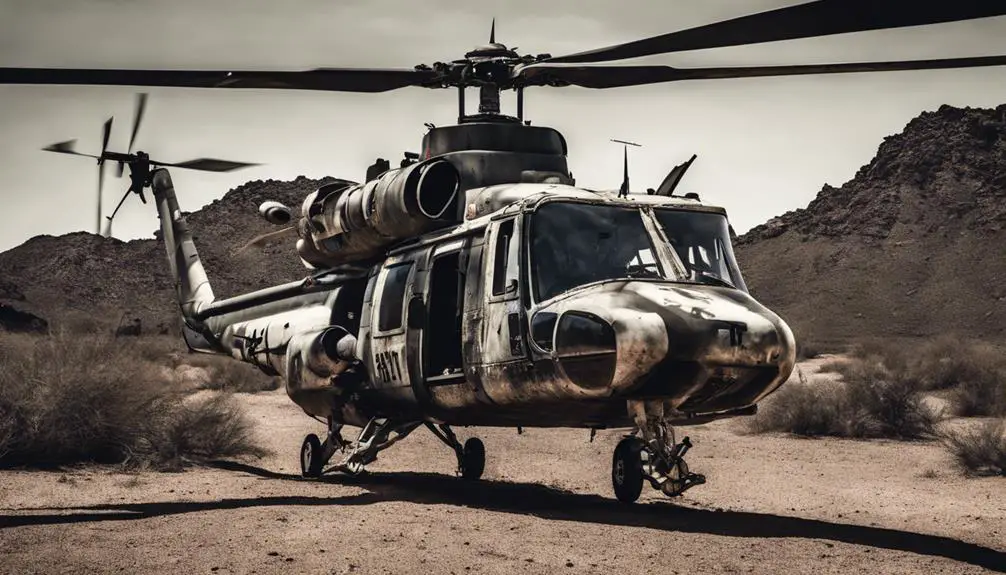You're about to enter a world of high-stakes communication, where every second counts. In military chopper slang, a 'bird' is a helicopter, and a 'rotorhead' is a badge of honor worn by pilots and crew members. This lingo originated in World War II for clear communication in high-pressure situations and has evolved with new terms and phrases as technology advances. From Mayday Protocols to code words for tactical ops, understanding chopper slang is essential for effective communication. Now that you've taken off, get ready to soar into the intricacies of military chopper language – there's more to explore ahead.
Chopper Slang 101: Basics Explained

When you're new to the world of military aviation, deciphering chopper slang can feel like trying to crack a secret code, but understanding the basics is vital for effective communication. You'll quickly realize that chopper slang has a rich history, dating back to the early days of military aviation.
As choppers evolved, so did the language used by pilots and crew members. You'll hear terms like 'bird' or 'helo' to refer to the helicopter itself, or 'rotorhead' to describe someone who's an expert in helicopter operations.
To better understand chopper slang, it's important to grasp its evolution. During World War II, military personnel started using abbreviations and colloquialisms to quickly convey complex information. This slang was born out of necessity, as clear communication was vital in high-pressure situations.
Over time, chopper slang has continued to adapt, incorporating new terms and phrases as technology advances and new generations of pilots and crew members enter the scene. By understanding the basics of chopper slang, you'll be better equipped to communicate effectively and navigate the world of military aviation with confidence.
Crew Lingo for Emergencies
In high-stress emergency situations, you'll frequently hear crew members relying on a distinct set of keywords and phrases to swiftly convey critical information. This crisis vocabulary enables swift communication, ensuring prompt responses to life-threatening situations.
When every second counts, Mayday Protocols kick in, and you'll hear phrases like 'Mayday, Mayday, Mayday' repeated three times to signal a life-threatening emergency. Crews will then follow established protocols to respond to the crisis.
In these high-pressure scenarios, concise communication is essential. You'll hear crew members using crisis vocab like 'Emergency Locator Transmitter' (ELT) or 'Survival, Evasion, Resistance, and Escape' (SERE) to convey vital information quickly. These terms help teams respond efficiently, reducing confusion and ensuring the best possible outcome.
Code Words for Tactical Ops

You'll often find military choppers using code words to convey sensitive information during tactical operations, ensuring secrecy and speed in high-stakes missions. These code words, often unclassified, are used to convey complex information quickly and efficiently.
For instance, 'Tactical Deception' might signal a diversionary tactic to distract from the main operation. Meanwhile, 'Covert Insertion' could indicate a stealthy insertion of troops or equipment into hostile territory.
Code words are essential in tactical ops, as they enable chopper crews to communicate critical information without revealing their plans to the enemy. By using pre-designated code words, crews can swiftly convey complex instructions, reducing the risk of miscommunication or delay.
In high-pressure situations, every second counts. Code words streamline communication, allowing chopper crews to focus on the mission at hand. By relying on a shared lexicon of code words, military choppers can execute complex operations with precision and speed, ultimately giving them a strategic edge on the battlefield.
Helicopter-Specific Slang Terms
What kind of helicopter-specific slang terms do military pilots use to convey critical information during flight operations?
You'll often hear pilots using terms like 'Rotor Rhythms' to describe the subtle vibrations and sounds that indicate a helicopter's rotors are in sync. This phrase is vital in conveying the aircraft's performance and stability.
In the heat of the moment, pilots rely on 'Flight Folklore' – unofficial, experiential knowledge passed down through generations of pilots. This collective wisdom helps them make quick decisions based on instinct and intuition.
For instance, if a pilot notices an unusual 'shake' during takeoff, they might adjust their ascent to compensate. These subtle adjustments are often learned through experience and shared among pilots as part of their 'Flight Folklore.'
You'll also hear terms like 'high-and-away' to signal a safe distance from obstacles or 'low-and-slow' to indicate a cautious approach. These phrases are woven into the fabric of helicopter operations, allowing pilots to communicate complex ideas swiftly and efficiently.
Phrases for Navigation Aids
Military pilots use specific phrases to communicate navigation aid information, such as 'field elevation' to confirm an aircraft's altitude above ground level or 'heading bug' to set a desired compass direction.
When piloting, you'll use phrases like 'grid references' to pinpoint exact locations on a map. You'll also use 'waypoint names' to identify specific points on your route. For example, you might receive a message like 'proceed to waypoint Bravo-17' to guide you to a specific location.
Other phrases you'll use include 'initial point' to mark the starting point of a mission, and 'release point' to indicate the location where you'll drop off cargo or troops. You'll also use 'waypoint altitude' to confirm the height above sea level at a specific point.
Chopper Radio Communication Codes
In high-stress, fast-paced military helicopter operations, clear and concise radio communication is crucial, and that's where chopper radio communication codes come in. You need to quickly convey critical information to guarantee mission success and safety. That's where standardized radio protocols come into play.
Chopper radio communication codes are essential for efficient communication between pilots, aircrews, and ground control. You'll use these codes to convey essential information, such as location, altitude, and mission status. Here are some examples of chopper radio communication codes:
| Code | Meaning | Purpose |
|---|---|---|
| Lima Charlie | Loud and Clear | Confirming reception of radio transmission |
| Oscar Mike | On the Move | Indicating movement or redeployment |
| Bravo Zulu | Well Done | Expressing appreciation or approval |
In addition to these codes, you'll also use frequency hopping to minimize interference and ensure secure communication. By following established radio protocols and using frequency hopping, you can guarantee clear and concise communication, even in the most chaotic of situations.
Slang in Modern Military Ops

You've likely encountered a plethora of slang terms during your time in the military, from 'Hooah' to 'FNG,' which serve as a unique aspect of military culture. These colloquialisms not only provide a sense of camaraderie but also serve as a coping mechanism for the stresses of military life.
Military humor, often irreverent and dark, is a key component of slang in modern military ops. It allows service members to find levity in otherwise dire situations, fostering a sense of resilience and teamwork.
As military operations evolve, so does the slang. New terms emerge, while others fall out of favor. This slang evolution is driven by the changing nature of modern warfare, technological advancements, and the diverse backgrounds of service members.
For instance, the rise of unmanned aerial vehicles (UAVs) has led to the coining of terms like 'drone strike.' Similarly, the increasing presence of women in combat roles has introduced new slang related to gender and identity.
As you navigate the complex world of modern military ops, being aware of these slang terms can help you better communicate and connect with your fellow service members.
Frequently Asked Questions
How Do Pilots Handle Conflicting Slang Terms Between Different Military Branches?
When you're a pilot, deciphering conflicting slang terms between different military branches can be a challenge. You face branch barriers that hinder effective communication, leading to interop challenges.
To overcome this, you'll need to be aware of the varying terminology used by each branch. By doing so, you can adapt your communication style to guarantee seamless collaboration, ultimately enhancing mission success.
Are There Any Chopper Slang Terms Specific to Certain Geographic Regions?
As you explore regional dialects, you'll find that local lingo varies greatly depending on the geographic region. You'll discover unique slang terms specific to certain areas, shaped by cultural influences and historical events.
For instance, pilots in the southern United States might use different terms than those in the northeast. Similarly, regional accents and colloquialisms can affect the way pilots communicate.
Can Civilians Use Chopper Slang Terms in Non-Military Contexts?
You're about to dip your toes into the murky waters of linguistic borrowing. Can you use military slang terms in everyday language? Well, that's a grey area.
While it's tempting to adopt cool, rugged phrases, you're treading on thin ice. Cultural appropriation is a real concern. Be mindful of the origins and respect the context.
Using chopper slang terms without understanding their history and significance can come across as insensitive or even disrespectful. Proceed with caution, and consider the cultural weight of your words.
How Often Are Chopper Slang Terms Updated or Changed?
You might wonder how often slang terms, in general, are updated or changed. The answer lies in linguistic evolution, driven by cultural influences.
New words and phrases emerge as cultures blend, and old ones fall out of use. This process is constant, with slang adapting to reflect current events, technology, and societal shifts.
As cultural influences shape language, slang terms evolve, ensuring that language remains dynamic and relevant.
Are There Any Chopper Slang Terms That Have Been Officially Deprecated?
As you explore the world of slang, you'll find that language is a living, breathing creature – it evolves, adapts, and sheds its skin.
When it comes to term retirement, you'll discover that yes, some slang terms do get officially deprecated. It's an important process of slang evolution, where old terms are phased out to make way for new ones.
In the context of chopper military slang, this process is essential to maintaining clear communication and avoiding confusion in high-stakes situations.
Conclusion
You've now cracked the code of chopper military slang, and it's time to put it into action. Mastering this lingo is vital for seamless communication in high-stress situations.
As you operate in the skies, remember that clear and concise communication is key to success. Stay alert, stay focused, and stay chopper-savvy – lives depend on it.
With this newfound knowledge, you're ready to take to the air and execute tactical ops with precision and confidence.







